A SUICIDE ATTEMPT
When Deacon Lewis arrived at the Chancery, he handed over the laptop with a warning to Monsignor Murphy that the situation was a "time bomb" that required urgent handling.
Creech took charge. Digging into the files on the laptop, she found hundreds of photos, some that appeared to have been taken from under tables, focused on crotch areas of children. Girls wearing shorts who appeared to be 8-10 years old were pictured with legs spread. A toddler was seen with her diaper pulled back to expose her. Creech also found bookmarked websites on the computer for two-way mirrors, spy pens and tiny hidden cameras designed to look like ink pens.
Creech copied the photos and advised Monsignor Murphy to call police, according to an interview she gave for the Graves investigation. Diocese communications director Rebecca Summers also told Murphy to call police. Neither would comment for this story. Still, nobody called authorities.
Ratigan initially denied knowing what was on the computer, telling Deacon Lewis it had been given to him by another person, according to the Graves report. The next day, December 17, the day of the diocese Christmas party, Ratigan did not show up for mass. Lewis went to Ratigan's home to check on him, and ended up calling emergency responders who found the priest nearly dead from carbon monoxide poisoning. He was lying on the floor of his garage next to his motorcycle. Authorities reported that he had a cell phone in one hand and his rosary in the other.
At the hospital, some of Ratigan's relatives met with Deacon Lewis, who explained to the family that some inappropriate images had been found on the priest's laptop. Lewis did not say they involved children, according to Darron Blankenship, Ratigan's brother-in-law, and the family never suspected the pictures might be evidence of illegal activity.
The family assumed the photos must be personal pictures of Ratigan with a woman, or perhaps adult pornography. The thought that the pictures might be of children never seemed possible, said Blankenship.
"I'd known him 16 years. He was one of my good friends," said Blankenship, who is married to Ratigan's youngest sister.
At first it looked as though Ratigan might not survive. But the priest recovered and was sent to a psychiatric hospital in Kansas City. Still lacking details from the diocese, Ratigan's brothers and sisters took their children to visit Ratigan in the hospital.
The children of St. Patrick parish were encouraged by their teachers to send get well cards to Ratigan, a detail that still outrages many parents nearly a year later.
As Ratigan regained his health, Bishop Finn, Monsignor Murphy and others in the diocese continued to agonize over what to do. More diocese officials and staffers were brought into the discussion, including consultations with legal counsel. Diocese officials ultimately concluded that the pictures did not appear to be pornographic because they did not depict sexual conduct, sexual contact, a sexual performance, or meet other criteria they believed would constitute child pornography, according to the Graves report and interviews with other sources.
Some inside the diocese believed that Murphy had fully explained the situation to police and had been told the pictures were not pornographic.
For his part, Bishop Finn maintains that he never viewed the photos himself but only had them described to him. In comments following Ratigan's arrest, he called the pictures "inappropriate photographs or images."
Following Ratigan's recovery from his suicide attempt, the bishop sent him for psychiatric evaluation in Pennsylvania. After getting an opinion that Ratigan was not a paedophile from a Pennsylvania doctor who specializes in treating priests for mental health issues, Bishop Finn assigned Ratigan to live in a mission house with aging priests in Independence, Missouri, and warned him to stay away from his computer and not to use his camera.
As the time stretched on, diocese officials began to debate whether or not they should try to identify the children in the photos. They did not in the end make such an effort, and though diocese officials discussed calling the Missouri Department of Family Services, no such contact was made. The diocese also decided not to refer the matter to its own Independent Review Board based on the rationale that no victims had complained.
And in a move the diocese ultimately grew to regret, it continued to keep the matter a secret from the families attending its churches and schools.
"I constantly look at the teachers now and wonder who knew," said Thu Meng, whose 5-year-old daughter used to insist on hugging Father Ratigan when Meng dropped her off at kindergarten.
Because so many of the photos do not show the faces of the little girls, Meng still is not certain that her daughter escaped Ratigan's lens.
"Nothing was done. There was no notification of parents until after he was arrested in May," she said. "Bishop Finn was in that case in 2008. Anything should have been a red flag for him."
MORE PHOTOS, MORE VICTIMS
By mid-February, Bishop Finn had laid down strict orders for Ratigan to stay away from children with the exception of celebrating mass for some youth and student groups. Finn ordered him also to stay away from cameras and computers, to stay in counseling and to refrain from ministry outside of work he might do at the Franciscan Prayer Center. The center housed elderly nuns and was located near the Vincentian Mission House where Ratigan was living, according to diocese officials.
But Ratigan did not adhere to the bishop's orders and in March attended a St. Patrick's Day parade, and went to a sixth-grade girl's birthday party. Bishop Finn has stated publicly that he confronted Ratigan about the violations and again admonished him to stay away from children.
Also in March, Finn gave Ratigan's computer to one of Ratigan's brothers, explaining that the diocese no longer needed the computer and that Ratigan himself was banned from using computers. Finn has said publicly that the family asked for the laptop back, but family members say Finn asked them to take it.
The family at first considered giving the computer to a college-bound family member, but recalling the diocese's warning of inappropriate images that the family thought were of adults, they ultimately destroyed the machine. They had no knowledge the computer might contain evidence needed for a criminal investigation, said Blankenship.
Concerns continued to mount. In April, Ratigan was seen interacting with children who came to the Franciscan Prayer Center for overnight retreats. Also in April, Ratigan hosted an Easter party with several young children among the attendees, including his family.
In fact, on Easter Sunday, Ratigan took more pornographic pictures of a young girl, prosecutors and plaintiffs in the civil lawsuits have alleged.
And according to a lawsuit brought by the parents of one alleged victim, Ratigan tried to take lewd photos of their daughter when invited to their house for dinner. Ratigan had contacted the girl on Facebook and her parents were concerned for his welfare following what they believed was an accident that hospitalized him in December.
They caught him taking a picture on his cell phone under their dinner table, the lawsuit states. Ratigan's lawyer declined to comment on this or other allegations.
Meanwhile, Kes continued to wonder and worry about the priest and the photos he had seen. He let his friend Deacon Lewis know how upset he was that police had not been called. He told Reuters he did not feel he had any evidence to take to police himself since he longer had the laptop. But as the months passed, Kes warned Lewis he would soon be going to police himself if the Diocese did not.
RATIGAN IS ARRESTED
It was mid-May when Monsignor Murphy finally brought in authorities. Without first alerting Bishop Finn, he met with Captain Smith, the same police official he had reached out to in December with the description of a single nude photo. This time, however, Murphy's story was different.
There were hundreds of photos, he told Smith.
The police captain told Murphy he needed to give the laptop to authorities immediately. But the machine had been destroyed several weeks prior, leaving only the copies the diocese had made to be handed over as evidence.
The destruction of the laptop, a key piece of evidence, was a significant blow to the investigation. Police had no way of knowing if the diocese had copied every photo, said Kansas City police detective Maggie McGuire, who sits on the FBI Cyber Crimes Task Force and led the Ratigan investigation.
"It was huge not to have the laptop," said McGuire.
Still, she said, investigators found explicit photos on a computer at St. Mary Parish where Ratigan had served from 2005-2009, which aided the investigation. Police also found compact discs belonging to Ratigan loaded with photos of young girls as well as a CD inside an envelope attached to a receipt dated April 2004. It contained 14 images of what police said were child pornography involving a girl who appeared to be 3 to 4 years old. Many photos appeared to have been taken in or around the churches Ratigan served.
The volume and content of the photos was unsettling even to veteran detective McGuire. "He's the priest. I was raised very Catholic and went to Catholic schools," McGuire said. "We see a lot of things in this job I do. But this is unbelievable to me."
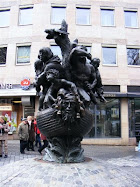
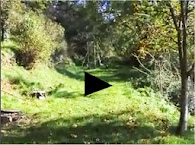
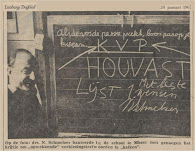

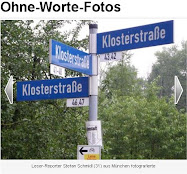
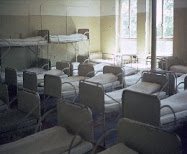






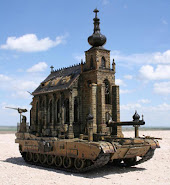
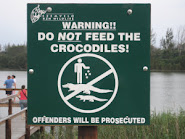


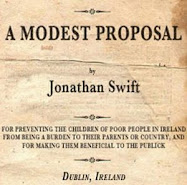


Geen opmerkingen:
Een reactie posten